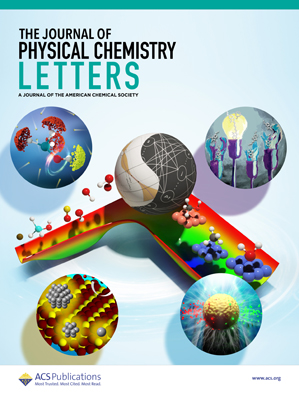First-Principles Insights into the Effect of Spin-Insulating Substrates on Molecular Kondo States
IF 4.6
2区 化学
Q2 CHEMISTRY, PHYSICAL
引用次数: 0
Abstract
Surface magnetic molecular systems have attracted increasing attention because of their potential applications in spintronic devices. Recent experiments have shown that bis(phthalocyaninato)terbium(III) molecules adsorbed on a bare Cu substrate exhibit a Kondo state, whereas introducing an insulating NaCl layer on the Cu surface significantly suppresses this spin response around the zero bias voltage. The microscopic mechanism underlying this transition remains unclear. To address this issue, we employed a combined approach of the density functional theory and hierarchical equations of motion method (DFT + HEOM) to examine how spin-insulating layers affect the molecular Kondo state. We first developed a novel algorithm to evaluate the hybridization functions that allows quantitative assessments of the molecule–substrate interactions in different configurations at the DFT level. Subsequently, we combined the HEOM method to simulate the differential conductance (dI/dV) spectra of the molecule adsorbed on different substrates. The obtained dI/dV spectra via the present combined approach agree well with the experimental observations. Our results indicate that the strength of the molecule–substrate hybridization critically determines the magnetic properties of the adsorbed molecule. Our work elucidates the important role of spin-insulating layers in tuning the Kondo effect and provides valuable insights for the rational design of surface magnetic molecular systems.

自旋绝缘衬底对分子近藤态影响的第一性原理研究
表面磁性分子体系因其在自旋电子器件中的潜在应用而受到越来越多的关注。最近的实验表明,吸附在裸Cu衬底上的双(酞菁)铽(III)分子表现出近藤态,而在Cu表面引入绝缘NaCl层显著抑制了零偏置电压周围的自旋响应。这种转变背后的微观机制尚不清楚。为了解决这一问题,我们采用密度泛函理论和层次运动方程方法(DFT + HEOM)相结合的方法来研究自旋绝缘层如何影响分子近藤态。我们首先开发了一种新的算法来评估杂交函数,该算法允许在DFT水平上定量评估不同构型的分子-底物相互作用。随后,我们结合HEOM方法模拟了分子在不同底物上吸附的微分电导(dI/dV)光谱。所得的dI/dV光谱与实验结果吻合较好。我们的结果表明,分子-底物杂交的强度决定了吸附分子的磁性能。我们的工作阐明了自旋绝缘层在调节近藤效应中的重要作用,并为表面磁性分子体系的合理设计提供了有价值的见解。
本文章由计算机程序翻译,如有差异,请以英文原文为准。
求助全文
约1分钟内获得全文
求助全文
来源期刊

The Journal of Physical Chemistry Letters
CHEMISTRY, PHYSICAL-NANOSCIENCE & NANOTECHNOLOGY
CiteScore
9.60
自引率
7.00%
发文量
1519
审稿时长
1.6 months
期刊介绍:
The Journal of Physical Chemistry (JPC) Letters is devoted to reporting new and original experimental and theoretical basic research of interest to physical chemists, biophysical chemists, chemical physicists, physicists, material scientists, and engineers. An important criterion for acceptance is that the paper reports a significant scientific advance and/or physical insight such that rapid publication is essential. Two issues of JPC Letters are published each month.
 求助内容:
求助内容: 应助结果提醒方式:
应助结果提醒方式:


